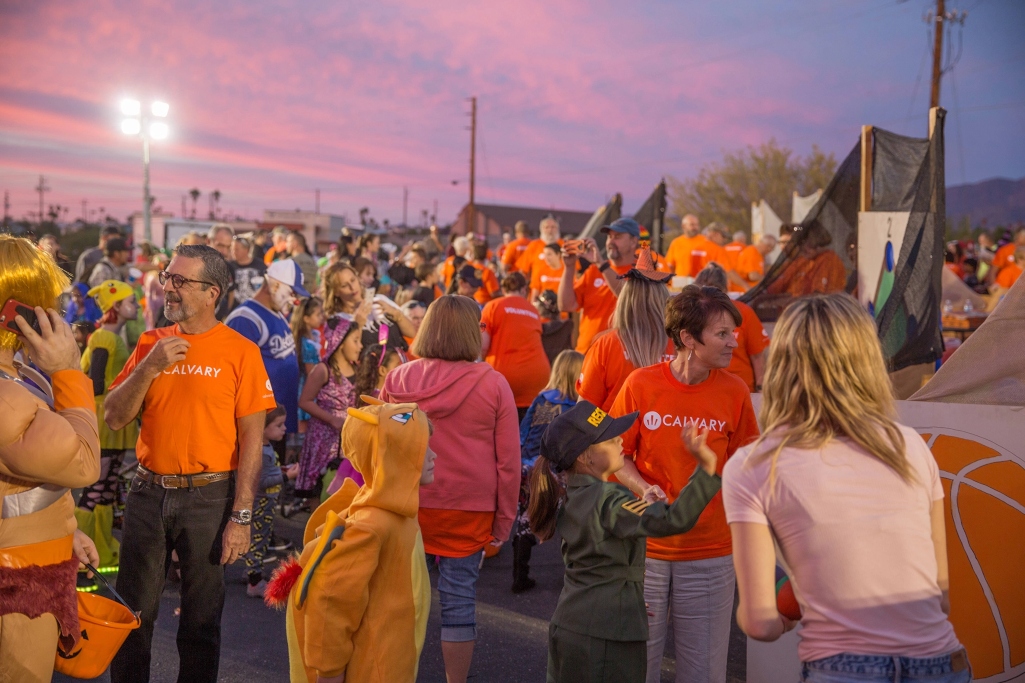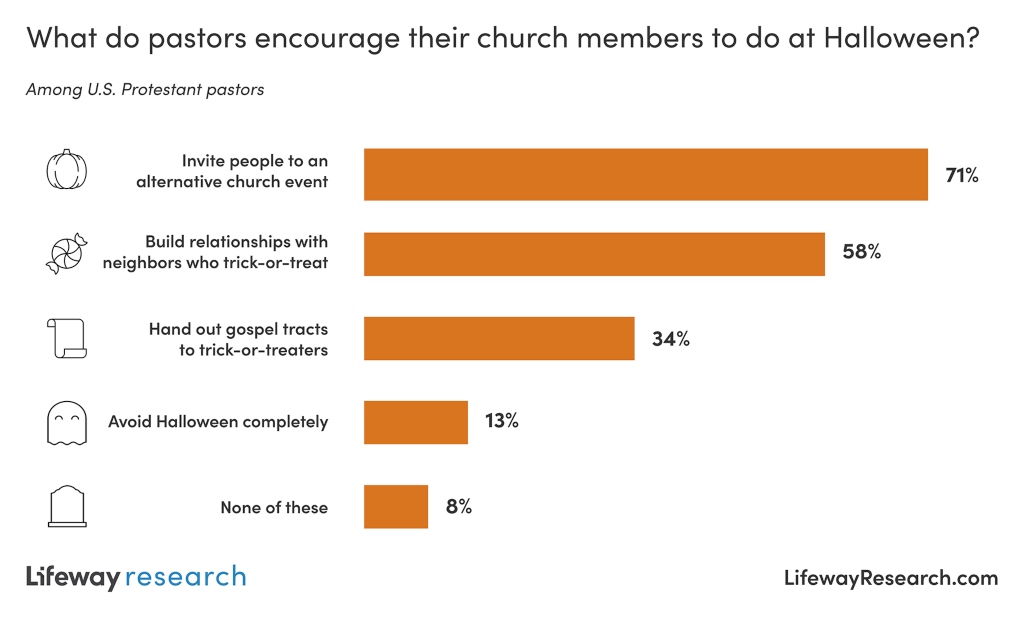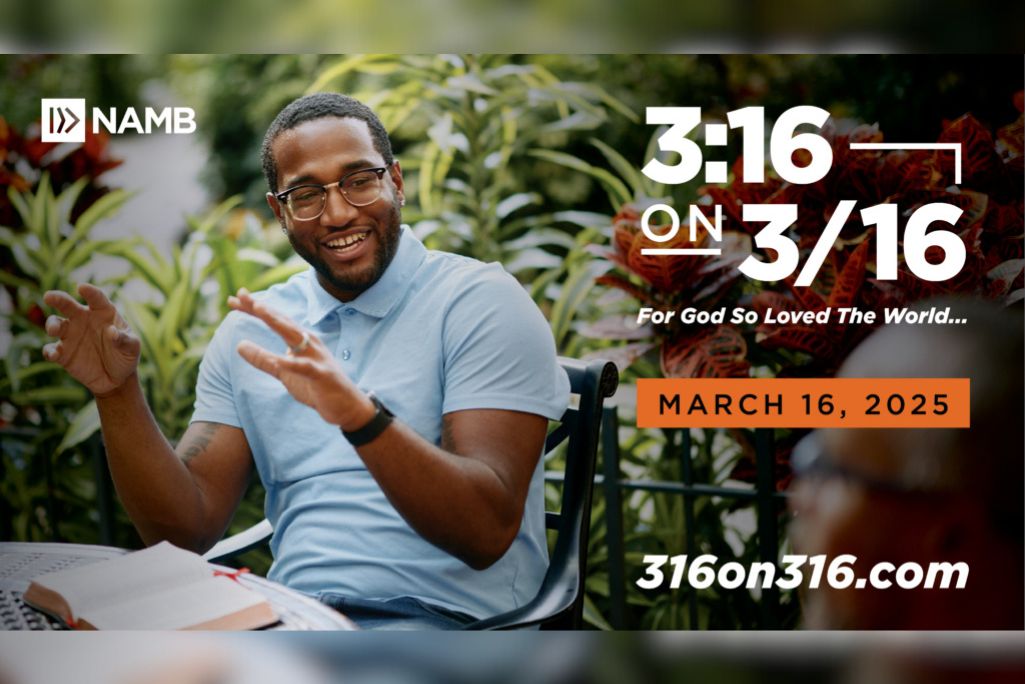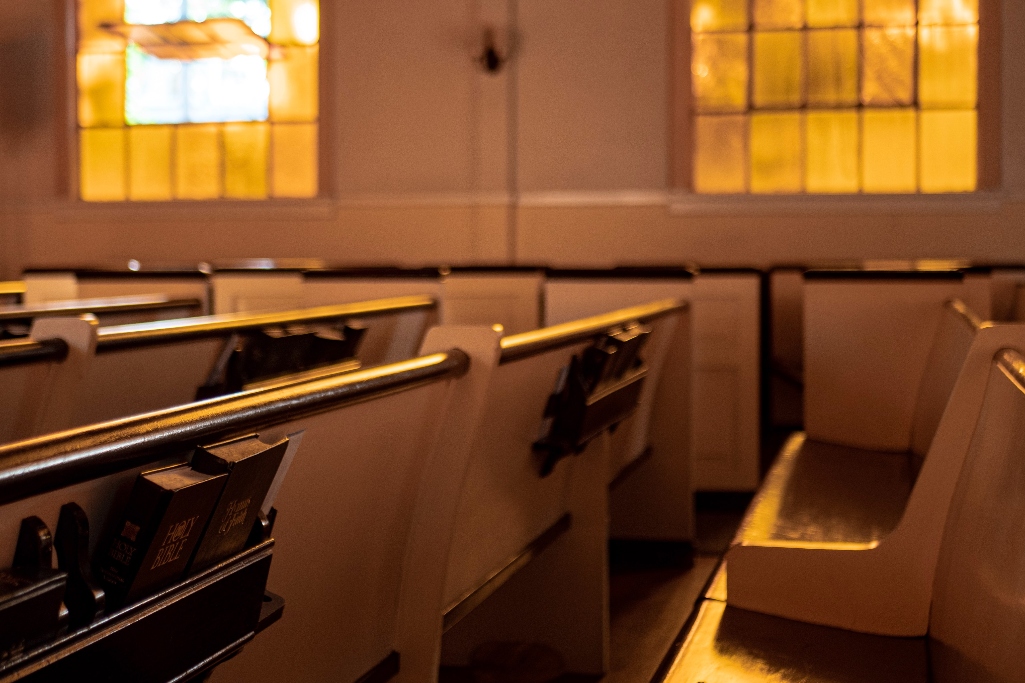
Calvary Baptist Church in Arizona hosts its neighbors for a Halloween event.
This year, as millions of Americans celebrate Halloween, many Protestant pastors in the United States are encouraging their church members to respond to the holiday in specific ways.
More than 7 in 10 (71%) pastors say they encourage church members to invite friends or neighbors to church events on or near Halloween, such as a fall festival, trunk-or-treat or judgment house, according to a Lifeway Research study. Nearly 3 in 5 (58%) pastors say they want church members to build relationships with neighbors who trick-or-treat. And 1 in 3 (34%) pastors encourage church members to hand out gospel tracts to trick-or-treaters.
More than 3 in 4 (78%) Americans are planning on celebrating Halloween this year, according to a Numerator survey. But not all pastors want their church members to take part. Lifeway Research found just over 1 in 8 (13%) say they encourage people in their congregations to avoid Halloween completely. Others don’t try to push their congregations in any direction regarding the holiday, with 8% of pastors saying they don’t encourage their church members to do any of these things.
“Few pastors simply ignore the fact that so many Americans participate in Halloween celebrations,” said Scott McConnell, executive director of Lifeway Research. “Most pastors focus on the social nature of these celebrations, encouraging their congregations to engage with others outside their church.”
More pastors seeking to influence Halloween engagement
Compared to 2016, pastors are more likely to seek to influence their church members’ engagement in Halloween festivities this year. And the largest increase is in handing out gospel tracts. Whereas 26% of pastors encouraged their church members to hand out gospel tracts to trick-or-treaters in 2016, this year, 1 in 3 (34%) pastors are doing the same.
But pastors are also more likely to encourage their congregations to engage in the holiday in other ways. In 2016, 67% of pastors encouraged their church members to invite friends or neighbors to church events. This year, 71% of pastors are encouraging the same. And pastors are also more likely to encourage church members to build relationships with neighbors who trick-or-treat this year (58%) than in 2016 (52%). As churches continue to recover from the impact of COVID, many may be trying to reconnect with their members and communities and see Halloween as an ideal opportunity for this engagement.
However, while some pastors are more likely to encourage their churches to engage in Halloween this year, others are more likely to encourage church members to avoid the holiday completely. While 8% of pastors encouraged their church members to avoid Halloween in 2016, 13% are doing the same this year. No matter their take on Halloween, pastors are holding to their stances more firmly and are more likely to vocalize those ideas for their congregations.

“Whether it comes from a desire to reconnect with their community after the pandemic prevented much of this or from deepened convictions about the holiday itself, pastors appear more resolute in their convictions around Halloween,” McConnell said.
Fewer pastors are refraining from influencing their church members’ engagement with Halloween at all. Whereas 12% of pastors said they were not encouraging their church members in any of these ways in 2016, 8% of pastors say the same today.
Engaging neighbors
This year, even more pastors are viewing Halloween as an opportunity to engage neighbors in at least some capacity. Younger pastors are more likely to encourage their congregations to engage in Halloween by inviting friends and neighbors to church events or by building relationships with neighbors who trick-or-treat. Pastors ages 18-44 and 45-54 are among the most likely to encourage members to build relationships with neighbors (66% and 63%, respectively) and to invite neighbors to church events (78% and 79%, respectively).
But older pastors are more likely to encourage their churches to hand out gospel tracts to trick-or-treaters. Those 55-64 (38%) and older than 65 (37%) are among the most likely to encourage church members to give out tracts.
“The majority of even the smallest churches offer church events this time of year and encourage their members to invite people from the community,” McConnell said. “In a society that is increasingly distant and divided, most pastors see opportunities within the interactions that take place around Halloween.”
Other factors also indicate a pastor’s likelihood of encouraging engagement with the holiday. White pastors are among the most likely to encourage their congregations to build relationships with neighbors (61%) and invite neighbors to church events (73%). Pastors in the South are also among the most likely to encourage church members to hand out gospel tracts (38%) and to invite neighbors to church events (75%). Evangelical pastors (42%) are more likely than mainline pastors (28%) to encourage members to hand out gospel tracts. And Baptists are the most likely to encourage the same (58%).
Avoiding Halloween
The oldest pastors, those older than 65, are among the most likely to encourage their churches to avoid Halloween completely (20%) and are the most likely to not encourage their churches to respond to the holiday in any of these ways (14%). African American pastors are also among the most likely to encourage their church members to avoid the holiday (32%) or not encourage their congregations in any direction regarding the holiday (19%). In terms of church size, pastors of churches with fewer than 50 in attendance are among the most likely to encourage their congregations to avoid Halloween completely (16%).
For more information view the complete report and visit LifewayResearch.com.
Methodology
The phone survey of 1,000 Protestant pastors was conducted by Lifeway Research Sept. 6-29, 2022. The calling list was a stratified random sample, drawn from a list of all Protestant churches. Quotas were used for church size. Each interview was conducted with the senior pastor, minister or priest at the church. Responses were weighted by region and church size to more accurately reflect the population. The completed sample is 1,000 surveys. The sample provides 95% confidence that the sampling error does not exceed plus or minus 3.2%. This margin of error accounts for the effect of weighting. Margins of error are higher in sub-groups. Comparisons are made to a phone survey of 1,000 Protestant pastors conducted Aug. 22-Sept. 16, 2016.
(EDITOR’S NOTE – Marissa Postell is a writer for Lifeway Christian Resources.)


